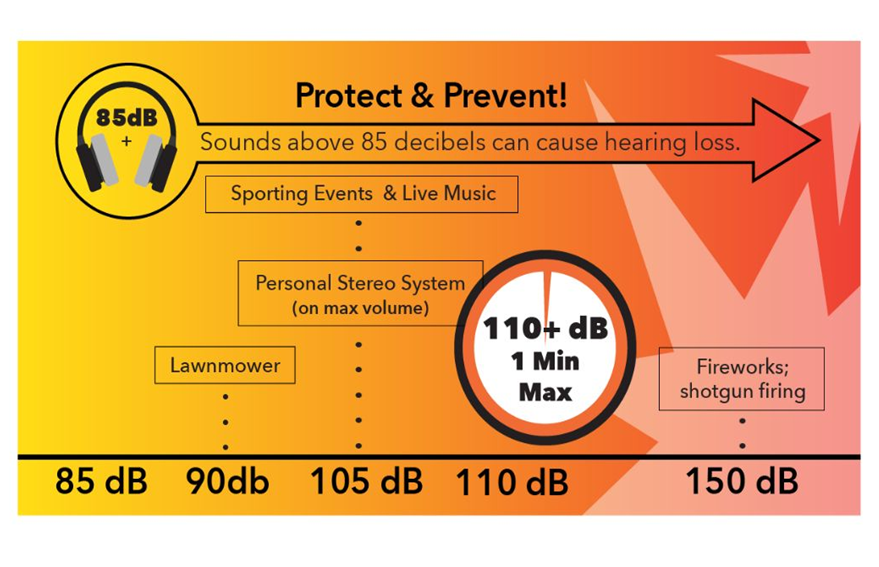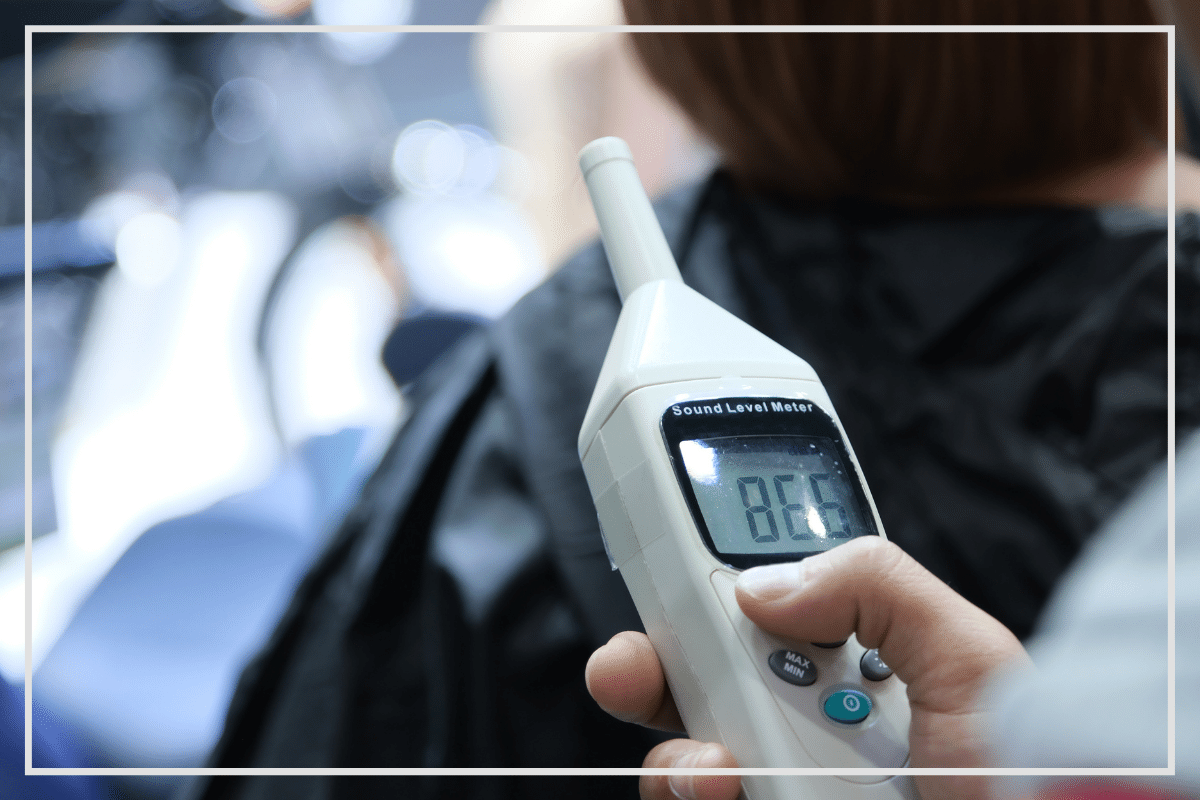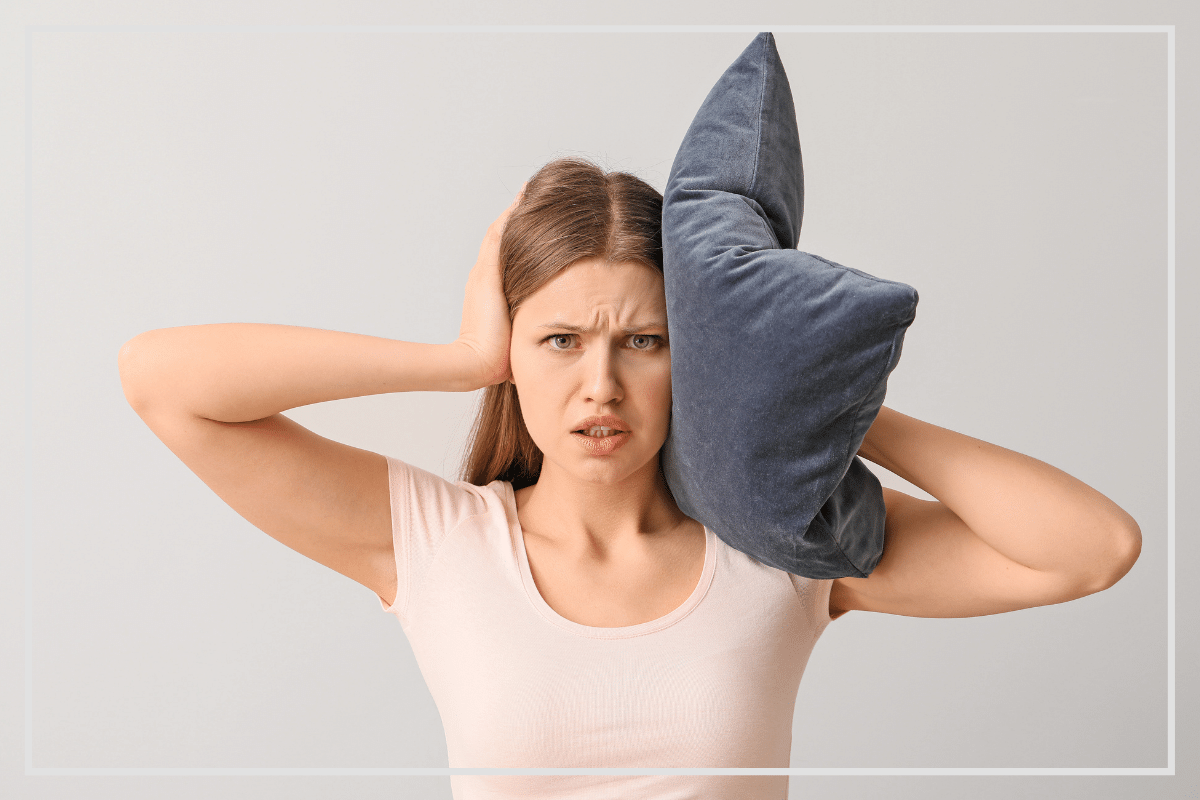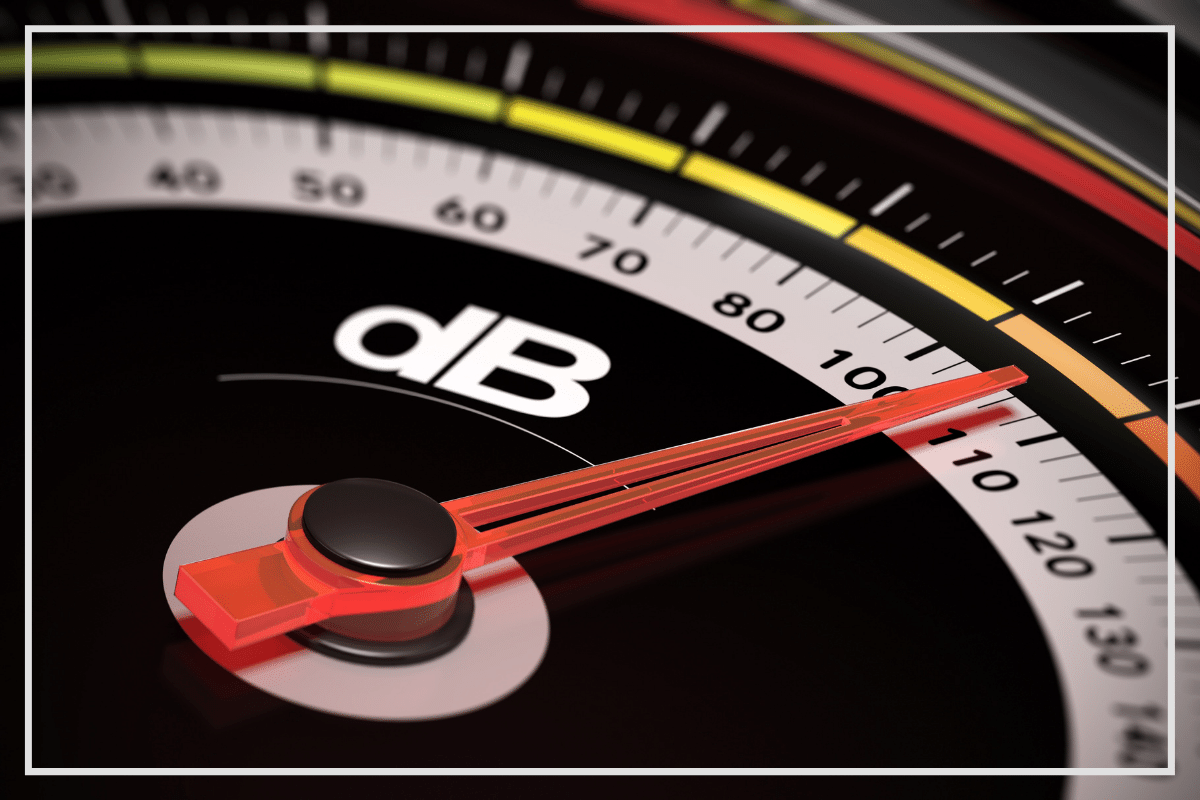- What Does 120 Decibels Sound Like?
- How Loud Is 120 Decibels?
- Safe & Harmful Decibels Chart
- 120 dB Comparison To Other Sound Levels
4.1 50 Decibels
4.2 85 Decibels
4.3 100 Decibels - How to Protect Your Hearing at 120 dB Sound?
5.1 Turn the Volume Down
5.2 Use Hearing Protection
5.3 Take Breaks from the Noise - Measure Decibel Levels with DecibelPro App
If you are curious as to just how loud 120 decibels is, you’ve come to the right place. In this article, we’re taking a closer look at this decibel level to see what it is equivalent to and how intense a 120 dB sound can get.
What Does 120 Decibels Sound Like?
When we want to find out just how loud a sound is, we turn to the decibel scale to learn the answer. This scale runs from 0 dB, which is equivalent to the quietest sound a human can perceive and goes up to 140 dB, a sound level that can instantly cause hearing loss.
120 decibels sounds like or is equivalent to the noise generated by:
· a chainsaw
· a thunderclap
· a rock concert
As you can see, 120 dB is a very loud noise level, close to the upper limit of the decibel scale.
How Loud Is 120 Decibels?
120 dB is a decibel level that describes extremely loud sounds. In fact, on a decibel chart, 120 dB marks the limit from which sounds become painful and very dangerous to the human ear.
To better understand how loud that is, here are more examples of what 120 dB of sound is equivalent to:
· a loud alarm or siren such as an ambulance siren
· a gunshot
· an oxygen torch
· a loud symphony
· an aircraft takeoff
· a Green Grocer Cicada
· the sound made by some animals like the North American bullfrog or Northern elephant seals
It is important to note that 120 decibels is a noise level so extreme that it can instantly damage your hearing and being exposed to such loud noises for even a few seconds can cause irreversible hearing damage or hearing loss.
For the human ear, which is very sensitive especially to sound impulses, exposure to noise levels above 85 decibels becomes dangerous after 8 hours and the recommended maximum exposure drops each time there is the slightest increase in decibel level.
Here are some examples of maximum recommended exposure times:
|
DECIBEL
LEVEL |
EXPOSURE
TIME |
|
85 dB |
8 hours |
|
90 dB |
2 hours |
|
100 dB |
15 minutes |
|
110 dB |
1 minute |
|
120 dB |
0 min |
Safe & Harmful Decibels Chart
Exposure to sounds below 70 decibels is considered safe for human hearing no matter how long you are exposed to this level. This limit is considered for adults. For babies, the maximum decibel level they should be exposed to is 50-60 dB.
The recommended exposure time decreases as noise levels exceed 85 decibels, which is the limit from which sounds are considered harmful to the human ear.
In the decibel chart below, you can see a graphic representation of safe and harmful decibel levels (yellow sound levels are ok, red sound levels are harmful).

120 dB Comparison To Other Sound Levels
Each time a sound’s level increases by 10 dB, its intensity also increases 10 times. This is because the decibel scale is logarithmic, not linear, and describes progressing measurement changes. So, even though we may think that a 10 dB sound difference is negligible, it is, in fact, quite significant.
Here are a few examples:
50 Decibels
50 dB is a moderate sound level, one that you can measure in a quiet residential area or a moderately quiet room. When compared to 50 dB, 120 dB is 32 times louder but 10,000,000 times more intense.
85 Decibels
85 decibels is the limit from which workers in factories and construction sites are required to wear hearing protection devices. It is a loud noise level, but not compared to 120 dB, which is over 1,000 times more intense.
100 Decibels
Compared to 100 dB, 120 dB sounds are 100 times more intense.
How to Protect Your Hearing at 120 dB Sound?
There are a few surefire ways to protect your hearing whenever you are in an environment where there is a lot of noise such as distancing yourself from the source or using protective gear. Specialists recommend that you wear hearing protection whenever noise levels exceed 85 dB.

If you are ever exposed to 120 dB noise, here is what you can do to protect your hearing:
Turn the Volume Down
If you are the one that is in control of the volume level, all you have to do to protect your hearing is to turn it down. This works if you are listening to music on a personal listening device or on your sound system’s speakers.
Use Hearing Protection
If you are not in control of the volume, you should consider wearing hearing protection devices such as earmuffs, earplugs, or noise-canceling headphones to keep your hearing safe.
Take Breaks from the Noise
Last but not least, you should take breaks from the noise whenever possible and find a little peace and quiet further away from it to keep your ears safe.

Measure Decibel Levels with DecibelPro App
Sound meter apps are the most popular tools used today to measure noise levels. They are very easy to use and convenient since they can be downloaded on your phone or tablet.
Decibel Pro is a top decibel meter app you can find on the AppStore or GooglePlay and use on your iPhone or iPad to see if the noise levels you are exposed to in your home or at work are acceptable for you (or for your neighbors).
On top of this, Decibel Pro also has additional features for sound analysis, sound measurement, and hearing protection.
It comes with:
· an integrated hearing test you can use regularly to monitor your hearing health
· a hifi spectrum analyzer you can use to improve the sound quality on your sound system
· a noise dosimeter that calculates your daily sound exposure and is a great tool for hearing damage prevention
To learn more about the Decibel app, click here.



